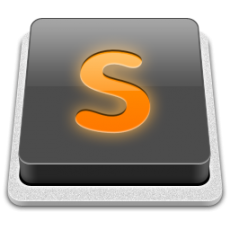
You must make your own informed decision about whether it's right for you and if so, pursue at your own (considerable) risk. It's true that when it's working, using a local editor is quite convenient, but there are many things that can go wrong, and the potential instability, system hangs, and data loss can be mildly irritating to downright devastating. These skills will serve you well now and in the future, as a local editor setup won't always be available or appropriate. Everyone should invest in learning a Unix-based editor and practice until reasonably comfortable. We also don't recommend relying on it as your first and only plan. Although there are ways to make this work, it involves hassles and risks that shouldn't be taken lightly. You may have a preferred text editor (XCode, TextPad, Sublime, Atom, Notepad, etc.) on your local machine and you'd like use it to also edit myth files. Can I use a local editor to edit remote files? A terminal editor, however, which is the text-based version of something like emacs, is typically very low bandwidth (advantageous if your network connection isn't so speedy). While we don't officially support this in CS107, you can feel free to look up online how to do this. To use this, however, you must set up a terminal program with windowing capability. Some programs, like emacs, do have a mode more like the word processing programs you've used with windows, menus, buttons, mouse input, and so on. I've heard that some terminal editors offer a GUI mode. Don't obsess over which editor to use, choose one and get practicing so that you can be happy and productive using it. Our staff is split between users of vim and users of emacs, so that is where our particular expertise is concentrated, and those are the two editors we recommend (see our emacs and vim guides), but tutorials and features for other editors are only a Google search away.

nano, for instance, is another editor on the myth machines that is very simple to use, but does not have many advanced functions.

Zealots might insist that "all real programmers use my-favorite-editor-here" but there is no "best" choice. Each has their intended audience and makes tradeoffs between ease of learning, usability, customization, extensibility, and so on.

There are a variety of text editors available on myth: emacs, vim, gedit, nano, pico, and more. Written by Julie Zelenski and Chris Gregg, with modifications by Nick Troccoli


 0 kommentar(er)
0 kommentar(er)
